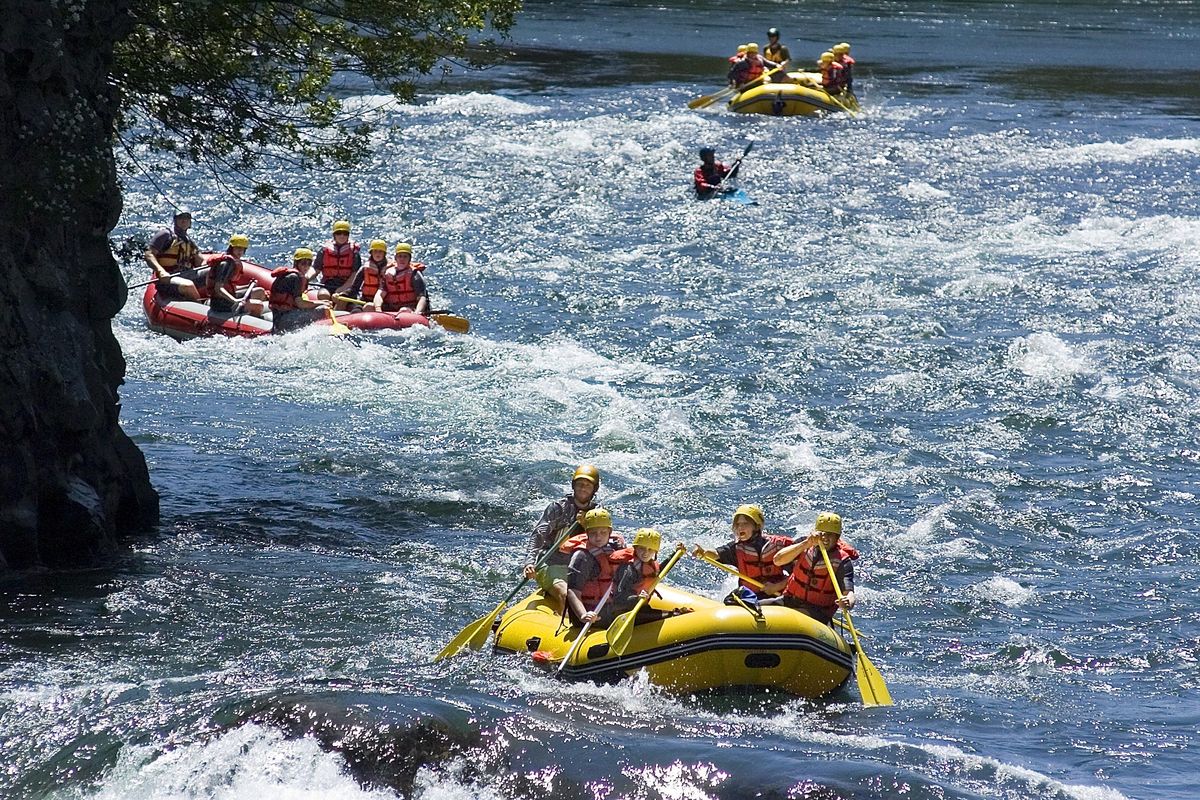Proposed Spokane River rules concern and anger some experienced paddlers

A revised set of rules for the Spokane River hopes to address a simple question: Who has to wear a life jacket?
Some experienced paddlers and river guides believe the proposed ordinance only muddies an already confusing set of regulations.
The Spokane City council will likely vote on the revised ordinance governing the use of the Spokane River on April 23.
Although current city rules mandate boaters wear a PFD, there is no enforcement mechanism, councilman Breean Beggs said. Additionally, the current ordinance only requires people to wear PFDs if they are on “canoes, kayaks, personal watercraft and similar type vessels.” People on inner tubes or other swim toys aren’t required to wear PFDs.
This legislative gray area was thrust into the spotlight when four people were rescued from the Spokane River last June. The rescue involved 35 first responders. The men were on inter tubes and were not wearing PFDs.
Additionally, Beggs said revising the rules will allow Spokane to align its rules with tweaked statewide rules governing rivers.
The proposed ordinance has been criticized by Spokane river enthusiasts and professionals.
“That ordinance was clearly written by someone who has never put a paddle in the Spokane River,” said Andy Dunau, the Spokane River Forum executive director.
The primary problem, in Dunau’s and others opinions, is that the proposed ordinance is too focused on motorized boats and does not clearly and adequately address the most pressing issue – people not wearing life jackets.
“I believe a PFD ordinance is necessary,” Dunau said. “It is for paddlers what seat belts are for cars and helmets are for motorcycles. It is just the right thing to do.”
The proposed ordinance covers PFDs and there is a fine – a Class 4 civil infraction that comes with a fine of $31.
Much of the nine-page ordinance focuses on motorized boat concerns, such as running lights. That’s despite the fact that all but about five miles of the Spokane River are closed to motorized boats. Those five miles, roughly from Plese Flats to the Nine Mile Dam, have no easy motorized boat access points.
To Dunau and Paul Delaney, this confuses an already murky issue.
“It’s 95 percent or more power boat-related,” Delaney said of the ordinance.
Delaney, a co-founder and board member of the Northwest Whitewater Association, said what’s really needed is clear and concise PFD ordinance. One that can be enforced.
If there are sections covering motorized use, he said, it should be separate from the nonmotorized one. Additionally, he’s frustrated with how the city has handled constituent feedback. Despite being invited to a stakeholders forum, Delaney said the city has ignored much of the advice given by experienced rafters and paddlers.
“I am beyond frustrated with the fact that we are at revision No. 3 and we still have not come close, in my estimation, to addressing the problem,” he said.
“We need a PFD ordinance, that’s it.”
Beggs is sympathetic to Delaney and Dunau’s concerns.
“He’s totally right it needs to be really simple and straightforward,” he said.
But, that isn’t how city ordinances work. They have to be detailed and defensible in court.
“When you’re writing an enforcement-type regulation in the code, you don’t want to leave loopholes for lawyers to exploit,” he said.
Instead, the clear, concise language comes after the ordinance, he said.
“The core of the disagreement is the difference between writing law and doing the signs and marketing the law,” he said.
As for ignoring stakeholder input, he said that’s not true.
“I know we’ve made vast changes in direct response to (Delaney’s) concerns,” he said.
As for the nonmotorized regulations, he said if those didn’t already exist perhaps the city would have made a ordinance focused specifically on PFDs. They do exist, however, and Beggs doesn’t want to introduce another distinct ordinance.
“We’re building on something that already exists,” he said.
Additionally, aligning city laws with state laws is, generally speaking, good legal policy.
“They (city lawyers) want there to be as little daylight as possible between our city law’s and the state’s,” Beggs said. “It’s just a principal.”
Beggs hopes that if the revised ordinance is passed, river guides and other frequent users will be willing to help craft clear, concise signage.
The proposed ordinance would also give the mayor the power to close the river for “safety or emergency reasons.” In 2017, high flow rates prompted the closure of the river, angering and frustrating many experienced kayakers.
With Spokane River use increasing “every year,” Dunau said mandating and enforcing PFD use is vital.
The U.S. Centers for Disease Control and Prevention lists failure to wear a life jacket as among the top reasons people drown.
With more use of the Spokane River comes potential dangers. PFDs can mitigate, if not eliminate, most of those risks, Dunau said.
“If you’re having a bad-luck day, you want your PFD on,” Dunau said.